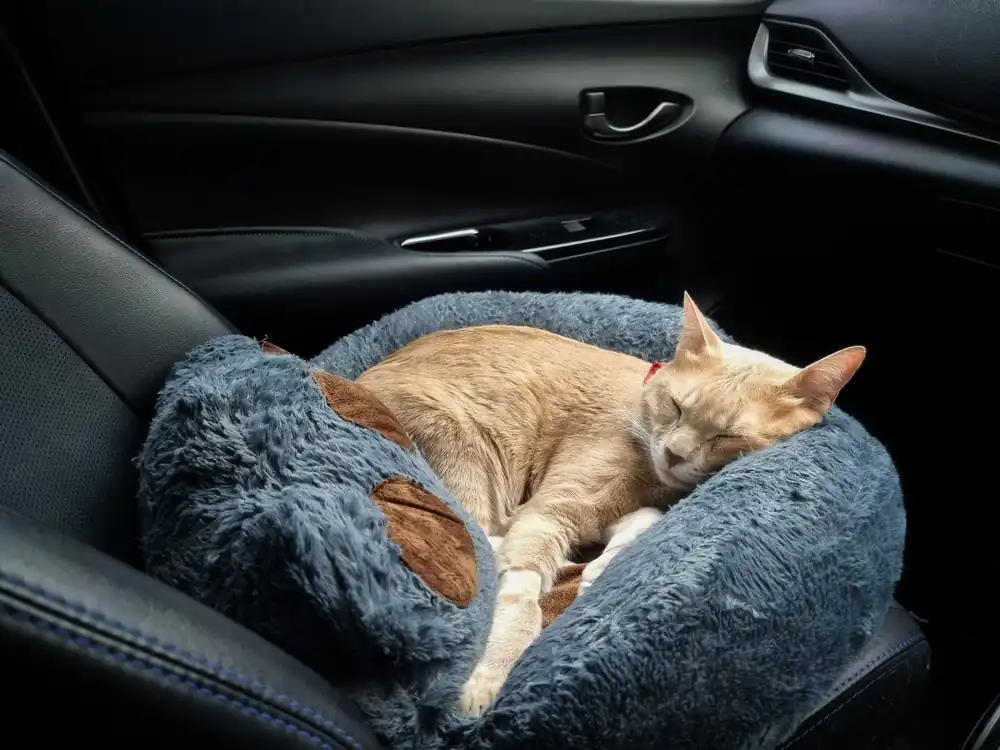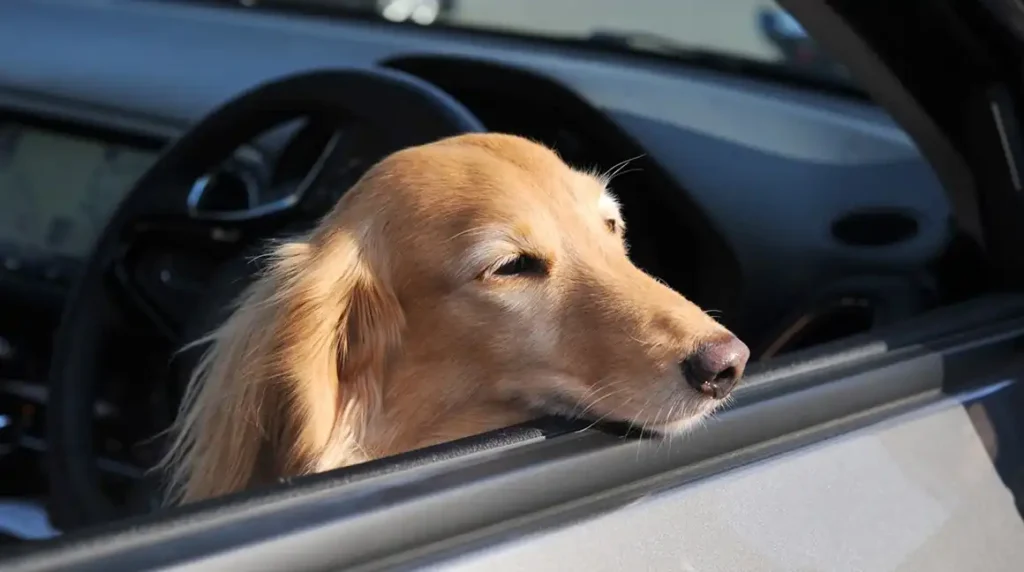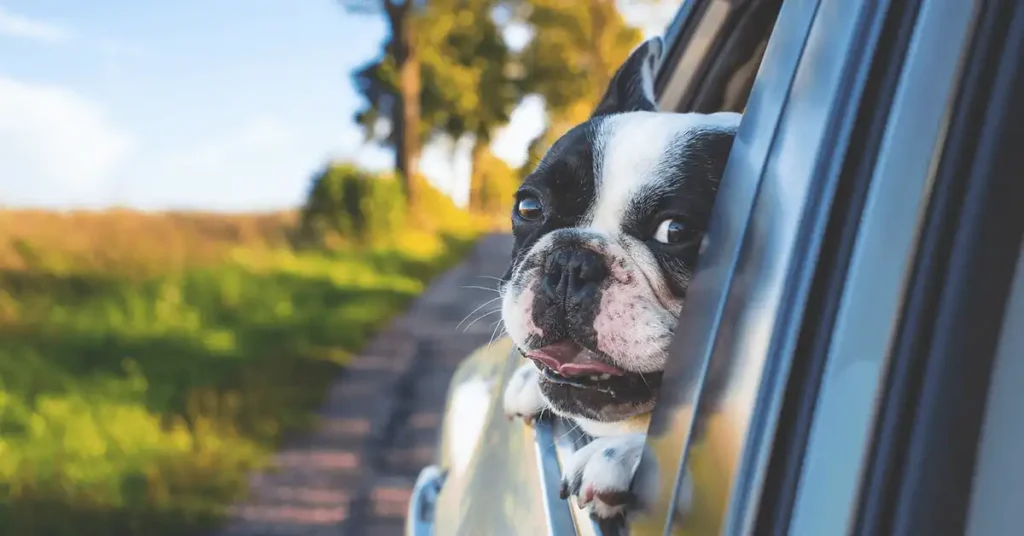Do dogs and cats also get motion sickness?

The main reason is that the car environment makes cats and dogs feel very uneasy and anxious.
Cats and dogs who rarely ride in cars will not be able to adapt to “the sound of the engine and horns from the car”, “rapidly changing images” but “stuffy air”, and “fast and slow driving speeds”, which will increase their stress. And produce motion sickness reaction.
If some dogs and cats have often experienced riding to the hospital by car in the past, it may also cause them to feel “uneasy” while riding in the car and make them more susceptible to motion sickness.
What are the symptoms and reactions of cats and dogs suffering from motion sickness?
Motion sickness reactions in dogs and cats are similar and can be divided into 3 levels of motion sickness symptoms.

If you begin to notice that your cat or dog is feeling mild to moderate discomfort, it is recommended that you stop the car as soon as possible, let the child out of the car to rest, stroke and comfort him, drink some water, and possibly give him medicine. This can prevent your child from experiencing more severe symptoms of motion sickness. oh!
Once a dog or cat experiences uncomfortable experiences such as vomiting or diarrhea after getting on the bus, it may make them less willing to ride on the bus and make them more anxious!
1, Mild motion sickness: restlessness, weakness in limbs, licking upper lip
2, Moderate motion sickness: drooling, runny nose, rapid breathing, panting, trembling
3, Severe motion sickness: vomiting, incontinence
What should I do if my cat or dog gets carsick?

We have divided the methods proposed by veterinarians and behavioral trainers into three stages to help dogs and cats prevent motion sickness.
It includes what needs to be “prepared in advance”, “things to remember to bring on the day” and how to deal with “when motion sickness occurs”, so that owners can prepare and respond accordingly according to their needs. (It is recommended to collect pictures)
Prevention methods 1. Prepare before traveling…
1. Sedation/motion sickness medicine: You can go to the veterinary hospital 1 to 2 weeks before traveling to buy sedation medicine, motion sickness medicine for pets, or prepare hormonal comfort spray, which can provide effective help when necessary.
2. Get familiar with the outing cage: One week before departure, you can open the outing cage and place it in a place where your furry children often come and go. They will get used to the existence of the cage and get the taste of life. It will also make them feel more at ease when you go out. ~
3. Adaptation in the car: One week before going out, you can take the fur baby from time to time to adapt to the car with the engine running, give it some delicious food, talk to it, and let the baby adapt to the environment, vibration and engine sound of the car.
4. Travel practice: even vacation trips may be long-distance trips. If your furry child cannot adapt, you can “try a few simple small trips” beforehand. The journey will take about 30 to 60 minutes so that he can get used to the feeling of being in the car and know how to travel. When we go out and get in the car, we are here to have fun! It’s not always necessary to see a doctor~
Prevention method 2. Pay attention before getting in the car that day…
There are also many preparation tips the day before or on the day of getting in the car, so that your furry child can go out with peace of mind.
1. Fast for 4-6 hours: Do not feed your furry child 4-6 hours before driving. This can reduce gastrointestinal motility and reduce the occurrence of motion sickness symptoms.
2. Distracting toys/snacks: Prepare things that the furry child can play in the car and distract his attention to reduce nerve tension and ease tension. However, the snacks must not be too many and should be given in small amounts.
3. Familiar blankets/nests: Bring familiar blankets, old clothes, or cages or nests that make your furry child feel more secure (must be fixed to avoid violent shaking), so that your baby can better adapt to the confinement and environment of the road. bumpy.
4. Front seat priority: Let dogs and cats “better in the passenger seat than in the back seat.” On the one hand, the familiar owner is around, on the other hand, the front seat has a wider and more comfortable view, and the vibration and vibration are relatively low.
Prevention method 3. What you can do while driving…
What can we do if we find that our furry child is acting weird or prone to motion sickness on the road?
1. Adjust the environment: Of course, in the car, we need to adjust the car environment. For example, we can “slow down the driving speed” and reduce frequent lane changes, acceleration and sudden braking, etc., which can “make the car more stable and comfortable”. It won’t keep your furry child frightened.
It is also recommended to slightly open the windows to allow air to circulate, making it less airtight and oppressive.
2. Rest in sections: During long-distance driving, it is recommended to stop and rest once at least about 2 hours. This allows your furry child to get out of the car and move around, breathe fresh air, and relieve the stress of being in the car.
3. Drink more water: Although it is not suitable for furry babies to eat in the car, drinking water is very important. Regularly replenishing furry babies with water can relieve gastrointestinal tension, relax muscles, and also reduce the occurrence of motion sickness to some extent!
4. Soothing behavior: If there are companions in the car, you can ask the other person to pet the fur baby’s head and scratch the chin more; if you are driving alone, you can play soft music or talk to the fur baby in a gentle voice, which can greatly appease it. What a mood!
